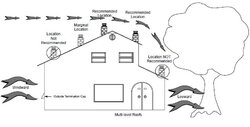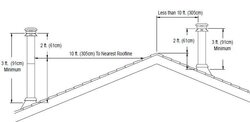Do you find any difference in effeciency of the wood stove or problems if the pipe from the stove goes straight up through the roof or if it comes from the back or top and runs horizontally then bends upwards?
Equinox elbow or straight up?
- Thread starter gonefishin
- Start date
-
Active since 1995, Hearth.com is THE place on the internet for free information and advice about wood stoves, pellet stoves and other energy saving equipment.
We strive to provide opinions, articles, discussions and history related to Hearth Products and in a more general sense, energy issues.
We promote the EFFICIENT, RESPONSIBLE, CLEAN and SAFE use of all fuels, whether renewable or fossil.



